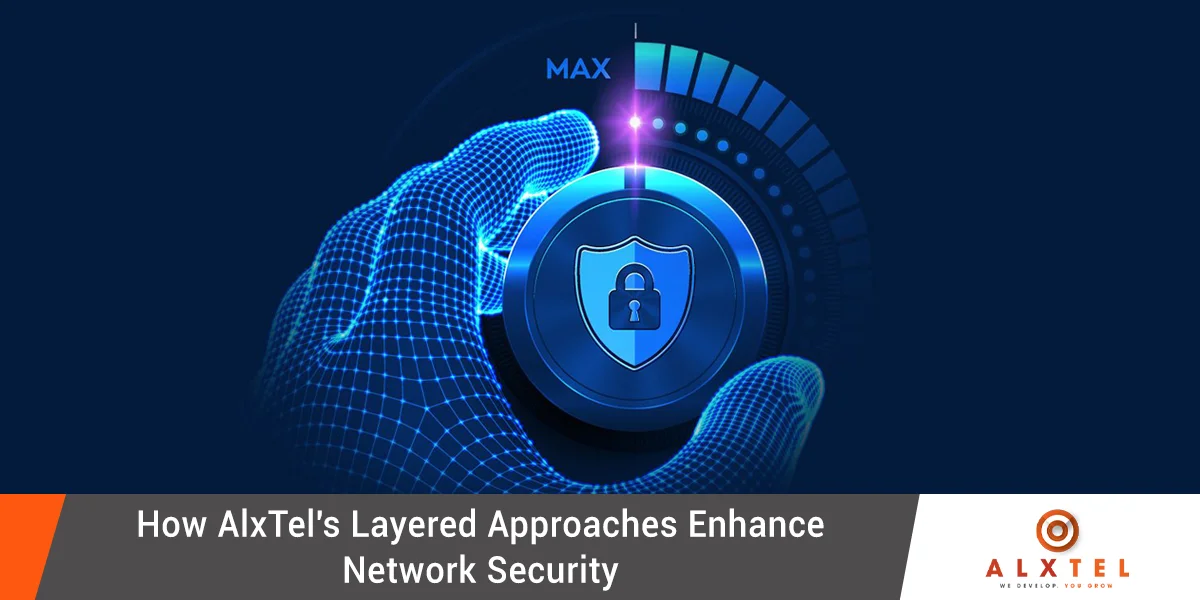Table Of Content
This is the age where businesses run on data. Where a single system outage can cause havoc. Not to forget about cyberattacks. And atop all that, we have natural disasters. All these catastrophes can disrupt operations. They lead to severe data losses. And, they can significantly damage a company’s reputation. The stakes are higher than ever.
No part of the system can work without data these days. The medical institutes rely on real-time patient data. Similarly, an e-commerce business processes thousands of transactions. And all this is happening daily. The dependency on IT infrastructure demands critical disaster recovery planning. But still, we see that many organizations remain underprepared. It can be an overlooked backup strategy or an outdated response protocol. But whatever the reason is, the absence of a robust disaster recovery plan can result in costly consequences.
Now, why are managed disaster recovery services important? This is where managed disaster recovery services step in. They address such outdated disaster management strategies to help your system reach its potential. They are outsourced solutions often referred to as Disaster Recovery as a Service (DRaaS). Managed disaster recovery services offer a modern, proactive, and more efficient approach to securing business continuity. They are designed for businesses of all sizes. The outsourced disaster recovery allows organizations to recover systems. As well as data, swiftly with minimal disruption. Managed disaster recovery services ensure that your business is never left vulnerable in times of crisis.
Understanding the Threat Landscape
We all agree that the digital world is constantly evolving. And we need to realize that the threats are evolving as well. Cybercrime is on the rise. Its most basic known form is the ransomware attacks. They are becoming more targeted and sophisticated. Then there are Hardware failures and power outages. Along with them comes the human error. And natural disasters always hit in one of the worst ways, like floods or earthquakes. They can compromise business systems on a large scale. The risks are diverse, yes! But the outcome is often the same. They all cost your business operational downtime and lost data.
For many businesses, downtime doesn’t just mean inconvenience. When there is a disruption in a huge business flow, it often brings more than just a website’s temporary downtime. Imagine an international online mart. Here, the outcomes will be disastrous. It translates to lost revenue and angry customers. The disrupted workflows and possible legal consequences add to the list.
In such heavily regulated industries, we need to keep these factors in sight. The lack of a solid recovery plan could lead to compliance violations and hefty fines. Yet, many businesses still think backups alone are sufficient protection. But on reality grounds, backups are just one component of a broader recovery strategy. AlxTel thinks what businesses need is a comprehensive plan. Such a plan ensures continuity, resilience, and rapid recovery. And MDR is the best choice for that!
How Managed Disaster Recovery Services Work
Highlighting the MDR services, we find that they are more than just data backup tools. They are not just one problem solution. They’re fully managed end-to-end solutions. They ensure rapid recovery of IT systems and infrastructure. To understand this, let’s break down the process. And see how these services operate effectively:
Risk Assessment & Planning
When we talk about managed disaster recovery services. All of them begin with an in-depth assessment. During this phase, we see that the provider works closely with the business. This is to evaluate the critical systems. They also analyze the data dependencies and potential vulnerabilities.
Throughout this process, the goal is to understand what needs to be protected. This helps to decide how quickly it must be restored in the event of a failure.
Now, here, we have two important metrics: Recovery Time Objective (RTO) and Recovery Point Objective (RPO).
RTO is the maximum time systems can be down without causing significant harm. Meanwhile, RPO is the maximum acceptable amount of data loss measured in time. Extracting these benchmarks shapes the entire managed disaster recovery services strategy. In the longer run, they help ensure the strategy is aligned with the organization’s operational needs.
Automated Backups & Data Replication
Once planning is complete, the provider sets up continuous, automated, and encrypted data backups. This includes both on-premise and cloud disaster recovery environments. Unlike traditional backup methods that occur at intervals, modern DRaaS solutions offer near real-time replication of data and applications. This means your data is continuously mirrored. And it is being done across multiple secure environments.
Such an act drastically reduces the risk of data loss. Thus, if there happens an event of a breach or failure. Your systems can be restored to their most recent, uncompromised state. And this often happens within minutes with MDR.
Failover & Failback Systems
The most important disclosure is when it comes to failover and failback systems. The true strength of DRaaS lies in its failover and failback capabilities. When a disaster occurs, the system automatically fails over to a secure backup infrastructure. This is usually located in the cloud. Sometimes we find them in a geographically separate data center.
Even if your primary systems are down. This ensures that operations continue without interruption. Once the issue is resolved. Along with it, the main infrastructure is restored. The failback process kicks in. In this way, the systems and data are migrated back to their original state. And, this happens without impacting performance. These transitions can be automated or manual. It purely depends on business preference and provider capabilities.
Regular Testing & Updates
Managed disaster recovery services aren’t a one-time setup. It translates as an ongoing process. Leading managed disaster recovery providers conduct routine tests. This is by using simulated scenarios to ensure the recovery plan remains functional and efficient. Such a type of testing is essential. It becomes critical, especially as businesses grow. Since they change platforms or add new systems, we need to assist and update them accordingly.
Regular testing helps uncover hidden vulnerabilities. Testing allows the provider to update the recovery strategy accordingly. Such checks give businesses confidence. They feel safe that, when disaster strikes, their systems can and will recover effectively.
Why You Should Outsource Disaster Recovery
The in-house vs MDR question arises every time we talk about disaster recovery. When it comes to disaster recovery, many businesses consider managing it in-house.
However, this approach often proves inefficient. It is expensive and risky. AlxTel suggests here’s why outsourced managed disaster recovery is the better choice.
Cost Efficiency
When you are building an in-house disaster recovery infrastructure. You will see that it requires significant capital investment. Hence, companies must purchase and maintain duplicate servers. They will need storage solutions, backup software, and data centers. Also, when you are hiring and training specialized IT staff to manage the system. It also has a cost since they manage and monitor the DR process. These costs can quickly escalate as well. Especially if you are talking about small and medium-sized businesses.
On the other hand, managed disaster recovery services offer a predictable, subscription-based pricing model. This means that you pay only for what you use. This way, the provider takes care of infrastructure, updates, and management. Such a process makes it a far more affordable disaster recovery solution.
Access to Expertise and Technology
Outsourcing managed disaster recovery means gaining access to a team of highly trained experts. A group of people who specialize in business continuity and disaster recovery alike. Such a workforce of professionals stays updated on the latest threats that your business might face. They use cutting-edge technology such as AI-based anomaly detection. Their strategies include predictive analytics and ransomware protection tools.
With managed services, businesses benefit from enterprise-level tools. They get the best out of the best practices without needing to build this expertise internally. This partnership ensures a faster, more reliable recovery. Hence, it minimizes human error.
Debunking Common Myths About Outsourced Disaster Recovery
Despite the clear advantages of managed disaster recovery services. Many businesses are hesitant to adopt them. This could be due to lingering misconceptions. Let’s set the record straight:
“It’s only for big enterprises.”
This couldn’t be further from the truth. As we see, small and medium-sized businesses (SMBs) have fewer resources to manage things at a larger scale. Especially if their needs grow drastically. It is hard to build in-house recovery solutions. DRaaS provides them with enterprise-grade protection. And this is easily done at a fraction of the cost. Hence, it levels the playing field for them. It also ensures that all businesses have access to continuity planning.
“We already do backups, so we’re covered.”
Yes! Backups are essential. But, one must know, they’re only one part of the equation. When a disaster strikes, it tends to tear past the layers of security, and one layer of security is the easiest to breach. A full disaster recovery plan includes recovery infrastructure and failover processes. Along with that, it also includes security protocols and testing. Organizations relying solely on backups may become vulnerable to actual downtime or infrastructure failure.
“Outsourcing managed disaster recovery services is too expensive.”
When compared to the cost of data loss, prolonged downtime, lost customers, and regulatory fines. You will find that outsourcing managed disaster recovery services is actually the more economical option. The subscription model also eliminates surprise expenses, allowing for easier budgeting.
Choosing the Right Managed Disaster Recovery Services Provider
Disasters, whether digital or physical, are inevitable. Hence, they require a proper disaster recovery plan to deal with. What matters most is how prepared your business is to respond when they occur. Our businesses thrive in an environment where even a few minutes of downtime can result in lost revenue. And this comes with risking customer trust. Hence, relying on managed disaster recovery services is not just smart, it’s essential.
If you’re ready to secure your organization’s future and ensure uninterrupted operations, it’s time to consider a trusted DRaaS provider. Your peace of mind and your business continuity are worth it.
Frequently Asked Questions
What is Disaster Recovery as a Service (DRaaS)?
DRaaS is among cloud-based managed disaster recovery services that enables businesses to replicate and recover their data and systems quickly in the event of an outage or cyberattack.
Is DRaaS the same as backup?
No. Backup is a copy of your data. DRaaS includes backups plus infrastructure replication, failover systems, and continuous monitoring to ensure full business continuity.
How fast can DRaaS recover my systems?
Depending on your defined RTO and RPO, recovery can take place within minutes. Top providers offer near-instant failover capabilities.
Will I have control over the DR process if it’s outsourced?
Yes. Managed DR solutions offer full visibility into the process, and you can work closely with the provider to make decisions and updates as needed.
Can DRaaS support compliance regulations like HIPAA or GDPR?
Absolutely. Leading providers offer compliance-ready environments and documentation to help with audits and regulatory reporting.
What industries benefit most from outsourced DR?
Industries like healthcare, finance, retail, legal, and education, essentially any sector that handles sensitive or mission-critical data, can greatly benefit from managed DR services.
References
Need support? You are our priority, We’ve got you covered.
Rapid response time to service requests, responding to all customer feedback to get in touch.
Our goal is to supply you with the best possible customer service across all our products and solutions. We look forward to helping you make the most of your AlxTel platform.







